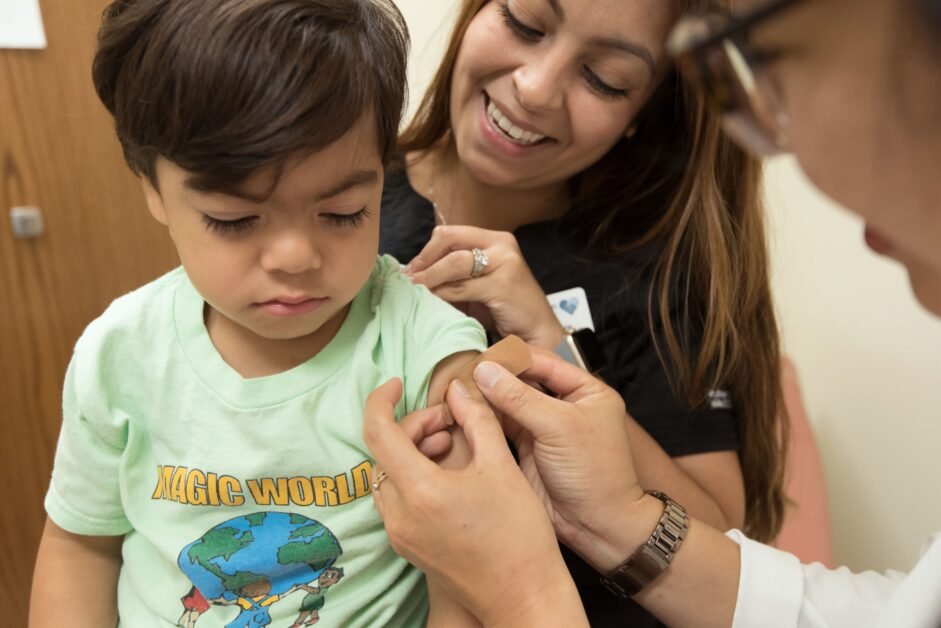How to Start a Diabetes Prevention Program
Diabetes is a prevalent health issue that affects millions of people worldwide, and the need for preventive measures has never been more crucial. This article provides invaluable insights on how to establish a diabetes prevention program. Whether you are personally impacted by diabetes or have loved ones who are, these tips and advice are designed to empower you in taking proactive steps towards a healthier future. By following the suggestions outlined here, you can make a meaningful difference in combating diabetes and its potential complications.
Table of Contents
Planning the Program
When developing a diabetes prevention program, it is important to begin with a clear plan. The first step is to identify the target population that will benefit from the program. This may include individuals at high risk for developing diabetes or those who have been diagnosed with pre-diabetes. Once the target population is established, it is essential to establish clear goals and objectives for the program. This will help guide the development and implementation of the program.
To ensure that the program meets the needs of the target population, it is beneficial to research existing programs that have been successful in preventing diabetes. This can provide valuable insights into effective strategies and program components. Additionally, it is crucial to determine the available resources, both human and financial, that will be needed to develop and sustain the program. This includes identifying potential sources of funding and considering the budget needed for program implementation.
Developing the Program
To develop a successful diabetes prevention program, it is important to gather a multidisciplinary team of professionals. This team should include individuals with expertise in nutrition, exercise, behavior change, and healthcare. Their diverse perspectives will contribute to the development of a comprehensive and effective program.
Conducting a needs assessment is a crucial step in the development process. This involves gathering information about the needs and preferences of the target population. By understanding their unique challenges and barriers, the program can be tailored to meet their specific needs. Based on the needs assessment, program components can be designed to address key areas such as nutrition education, physical activity promotion, and behavior change strategies.
Creating an outreach plan is essential to ensure that the program reaches the target population. This may include strategies such as community presentations, partnerships with local organizations, and targeted advertising. The outreach plan should consider the best methods to engage and communicate with the target population.
Developing evaluation methods is important to assess the effectiveness of the program. By collecting and analyzing data, program outcomes and impact can be measured. This information is valuable in identifying areas for improvement and making necessary adjustments to the program.

Implementing the Program
Once the program has been developed, it is time to implement it. One important aspect of implementation is recruiting program participants. Effective recruitment strategies may include collaborating with healthcare providers, utilizing social media platforms, and reaching out to community organizations. It is important to clearly communicate the benefits of the program and address any concerns or misconceptions that potential participants may have.
To ensure the program’s success, it is crucial to train program staff. This may include providing education on diabetes prevention, behavior change strategies, and effective program delivery. Program staff should be equipped with the necessary knowledge and skills to effectively engage and support program participants.
Delivering educational materials and resources is an integral part of the program implementation. This may include providing information on nutrition, physical activity, and self-management techniques. The materials should be accessible, culturally sensitive, and tailored to the needs of the participants.
Implementing behavior change strategies is essential to help program participants make lasting changes in their lifestyle. This may involve setting achievable goals, providing ongoing support, and addressing barriers to behavior change. By empowering participants and providing ongoing support, the program can help individuals adopt and maintain healthier behaviors.
Ongoing support is crucial in maintaining the program’s impact. This may include regular check-ins, support groups, and referrals to additional resources. By providing ongoing support, program participants can continue to receive guidance and encouragement as they work towards their goals.
Evaluating the Program
Monitoring participant progress is important to ensure that the program is effective. Regular assessments can help track participants’ outcomes and identify areas where additional support may be needed. This ongoing monitoring allows for timely adjustments to the program as needed.
Collecting and analyzing data is a critical step in evaluating the program’s effectiveness. This includes measuring outcomes such as changes in blood glucose levels, weight loss, and improvements in overall health. By analyzing the data, the program’s impact can be evaluated and areas for improvement can be identified.
Program effectiveness should be evaluated through various methods such as surveys, interviews, and focus groups. This feedback from participants can provide valuable insights into the program’s strengths and areas for improvement. This information can then be used to make necessary adjustments to enhance the program’s effectiveness.
Identifying areas for improvement is an essential part of the evaluation process. By identifying what is working well and what needs improvement, program coordinators can make informed decisions on program modifications. This continuous evaluation and improvement process ensures that the program remains effective and relevant.

Promoting the Program
To reach a wide audience and maximize the program’s impact, it is important to develop a marketing strategy. This may include creating promotional materials, utilizing social media platforms, and engaging with local media. The marketing strategy should effectively communicate the program’s benefits and encourage individuals to participate.
Utilizing social media and online platforms can be a powerful tool in promoting the program. By creating engaging content and sharing success stories, the program can reach a broader audience. Additionally, social media platforms can be used to provide ongoing support and connect program participants.
Collaborating with local organizations is another effective way to promote the program. By partnering with community groups, healthcare providers, and schools, the program can gain credibility and expand its reach. These collaborations can also provide valuable resources and support for program participants.
Hosting community events is a great way to raise awareness about the program. These events can include health fairs, workshops, or interactive activities related to diabetes prevention. By engaging the community, the program can foster a sense of support and involvement.
Offering incentives can be a motivating factor for individuals to participate in the program. Incentives may include vouchers for fitness classes, discounts on healthy food options, or rewards for meeting program goals. These incentives can help incentivize behavior change and encourage program participation.
Ensuring Sustainability
To ensure the long-term success of the program, it is important to secure funding sources. This may include grants, partnerships with local businesses, or collaborations with healthcare organizations. By identifying and securing funding sources, the program can continue to operate and serve the community.
Establishing partnerships is another key aspect of ensuring program sustainability. By partnering with community organizations, healthcare providers, and other stakeholders, the program can leverage resources and support. These partnerships can also help expand the program’s reach and impact.
Training successor staff is essential to ensure the program’s continuity. By providing comprehensive training and mentorship, program coordinators can prepare future leaders who can effectively carry on the program’s mission and goals.
Continuously evaluating and improving the program is crucial to ensure its long-term success. This includes regularly reviewing program outcomes, participant feedback, and emerging research. By staying up-to-date and adapting to new evidence and best practices, the program can remain effective and relevant.
Maintaining community engagement is vital in sustaining the program’s impact. This may include regular communication with participants, community events, and ongoing partnerships with community organizations. By fostering a sense of community and support, the program can continue to thrive and make a difference.

Addressing Barriers
Overcoming stigma and misconceptions is important when implementing a diabetes prevention program. Many individuals may have preconceived notions about diabetes and prevention strategies. By providing accurate information, dispelling myths, and addressing concerns, the program can help individuals overcome any stigma or misunderstandings.
Ensuring accessibility for all is another crucial aspect of a diabetes prevention program. This includes making sure that the program is inclusive and accommodates individuals with diverse needs. Considerations should be made for physical accessibility, language accessibility, and cultural sensitivity.
Addressing cultural and language barriers is important to ensure that the program resonates with the target population. This may involve providing materials in multiple languages, incorporating culturally relevant examples and resources, and seeking input from community members.
Providing financial support options can help overcome barriers to participation. This may include offering scholarships, sliding-scale fees, or partnering with local organizations to provide financial assistance for program participants. By offering financial support, the program can ensure that cost is not a barrier to participation.
Offering flexible program formats can cater to different individual preferences and needs. This may include offering virtual program options, evening or weekend sessions, or adapting the program to fit different learning styles. By providing flexibility, the program can reach a broader audience and accommodate varying schedules and preferences.
Integrating Technology
Utilizing mobile apps and wearable devices can enhance the effectiveness of a diabetes prevention program. These tools can help individuals track their progress, set goals, and receive personalized feedback and reminders. By leveraging technology, the program can provide continuous support and reinforcement.
Implementing telemedicine services can help individuals access healthcare professionals remotely. This can be particularly beneficial for individuals who may face transportation barriers or live in remote areas. By offering telemedicine services, individuals can receive necessary support and guidance without the need for in-person visits.
Collecting and analyzing data digitally can streamline the evaluation process and provide real-time insights into participant outcomes. By using digital tools to collect data, program coordinators can track progress, identify trends, and make data-driven decisions to improve the program.
Providing online education and support can expand the reach of the program and make it accessible to individuals at their convenience. This may include online modules, webinars, or virtual support groups. By offering online resources, the program can provide flexible and convenient options for program participants.
Ensuring data privacy and security is paramount when integrating technology into a diabetes prevention program. It is important to implement robust data protection measures and comply with relevant regulations to safeguard participant information. By prioritizing data privacy and security, the program can build trust and ensure participant confidentiality.
Collaborating with Healthcare Providers
Establishing referral systems with healthcare providers is important to ensure a coordinated approach to diabetes prevention. Healthcare providers can refer eligible individuals to the program and provide ongoing medical support. By collaborating with healthcare providers, the program can reach individuals who may not be aware of their risk or have access to preventive services.
Partnering with medical practices and clinics can enhance the program’s reach and impact. By partnering with healthcare organizations, the program can leverage their expertise, resources, and patient networks. This collaboration can also help establish a seamless continuum of care for individuals in the program.
Involving healthcare professionals in program delivery can enhance the program’s credibility and effectiveness. This may include inviting healthcare professionals to conduct educational sessions, provide medical guidance, or collaborate on program design. By involving healthcare professionals, the program can benefit from their expertise and enhance participant outcomes.
Coordinating healthcare and program services is important to ensure a holistic approach to diabetes prevention. This may involve regular communication between program staff and healthcare providers to ensure that participants receive comprehensive care. By coordinating services, the program can address both the medical and lifestyle components of diabetes prevention.
Maintaining communication and collaboration with healthcare providers is crucial for long-term success. This includes sharing program updates, participant progress, and seeking input from healthcare professionals to continuously improve the program. By fostering strong relationships with healthcare providers, the program can enhance its impact and sustainability.
Building Community Support
Engaging local leaders and influencers can help raise awareness about the program and garner community support. Local leaders can serve as ambassadors for the program, share success stories, and help promote participation. By enlisting the support of influential individuals, the program can gain credibility and reach a wider audience.
Forming partnerships with community organizations is important in building support for the program. These organizations may include community centers, faith-based groups, or local nonprofits. By collaborating with community organizations, the program can tap into existing networks, resources, and expertise.
Empowering program participants as advocates can help amplify the program’s message and impact. By providing opportunities for participants to share their success stories, become peer educators, or engage in advocacy efforts, the program can create a network of individuals who champion diabetes prevention. This grassroots support can strengthen the program’s reach and sustainability.
Developing a volunteer network can help expand program capacity and reach. Volunteers can assist with various program activities such as recruitment, event planning, and participant support. By leveraging the power of volunteers, the program can extend its reach and impact within the community.
Creating supportive environments is important in promoting behavior change and sustaining healthy habits. This may involve working with local businesses to offer healthy food options, creating walking paths or exercise facilities, or advocating for policies that support physical activity and access to healthy foods. By creating a supportive environment, the program can make it easier for individuals to adopt and maintain healthy behaviors.
In conclusion, starting a diabetes prevention program requires careful planning, development, implementation, evaluation, and sustained efforts to promote health and well-being. By following the outlined steps and considering the unique needs of the target population, a comprehensive and effective diabetes prevention program can be created. With the collaboration of multidisciplinary teams, the engagement of healthcare providers and the community, and the integration of technology and supportive environments, the program can make a significant impact in preventing diabetes and improving the health outcomes of individuals at risk.









